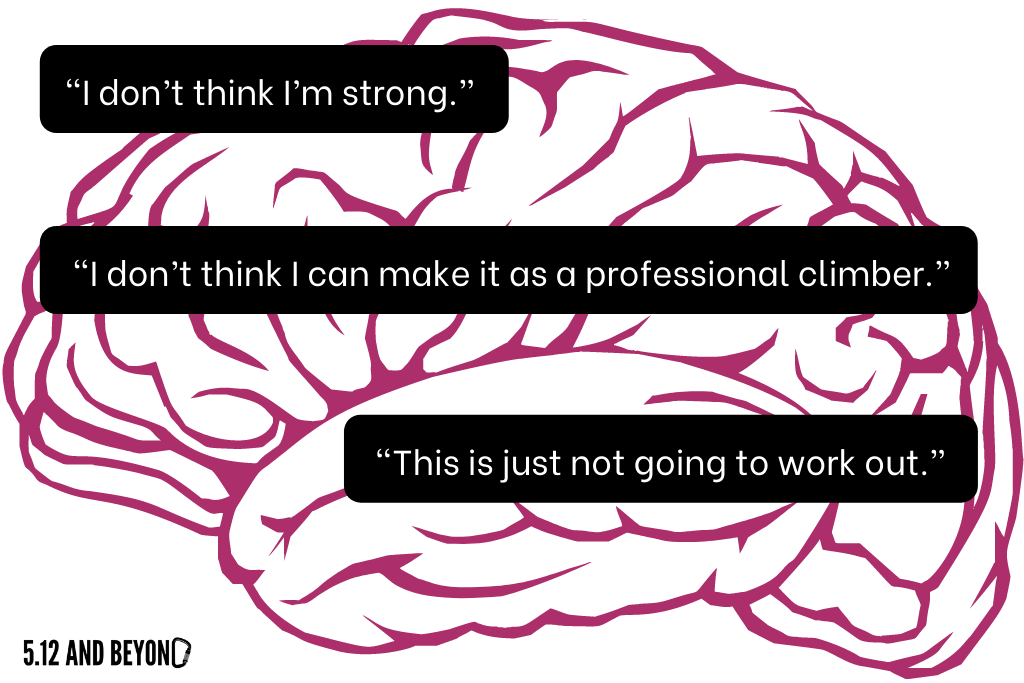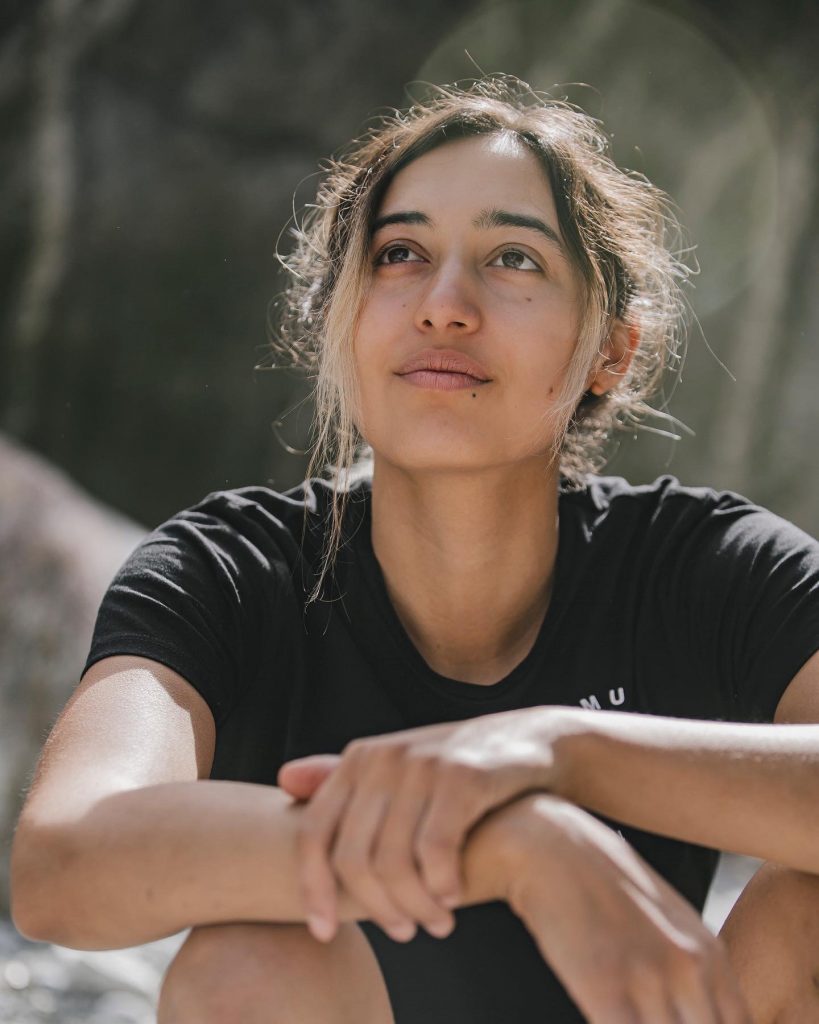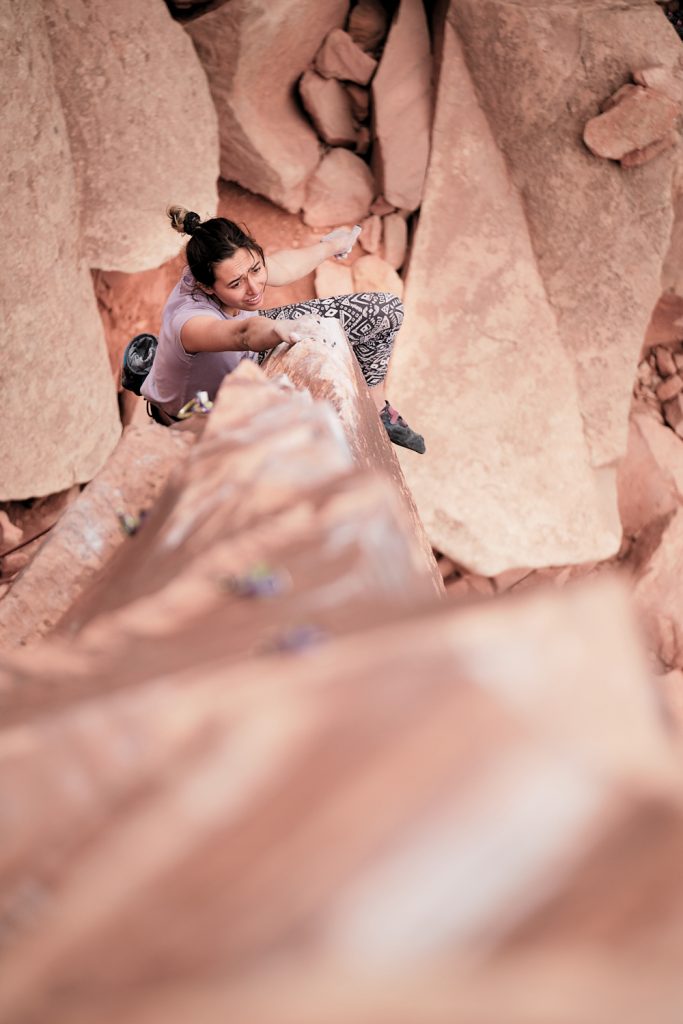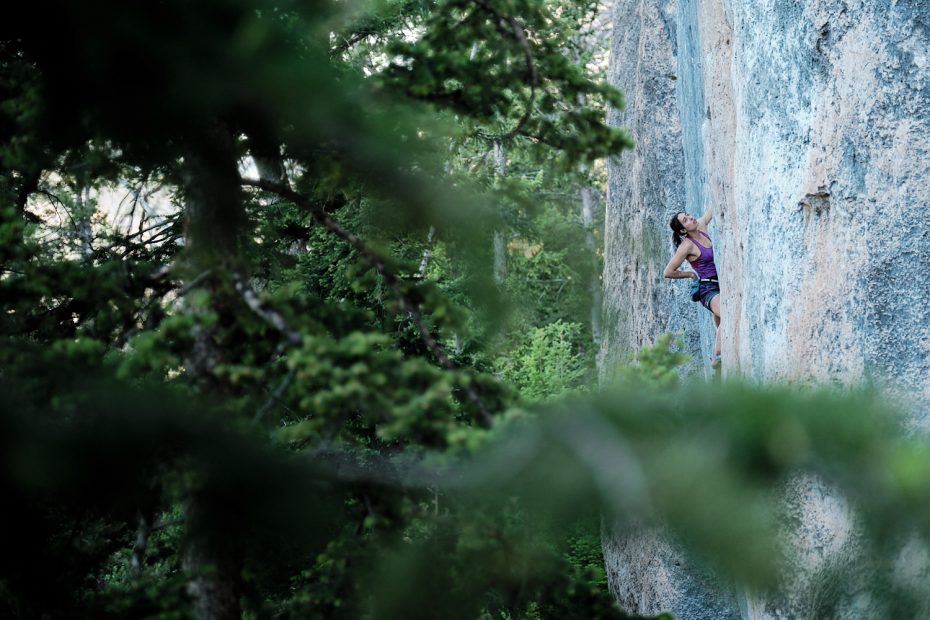You’ve arrived at the second part of my interview with Anna Hazelnutt. If you missed Part One: Fear, here’s a link…
I’m going to assume you’re all caught up now and pick up right where we left off.
Part Two: Failure
“I’m totally obsessed with climbing. And it’s funny that it just hasn’t changed: I’m still totally obsessed.”
Anna started climbing at 16, and it was love at first sight. Every penny she made went into climbing. License in hand, teenage Anna would drive out to Joshua Tree to go bouldering as often as possible, fitting Sunday sessions in before dinner and curfew. But it wasn’t all sunshine and roses: there was a time when Anna considered quitting. She felt like the only thing that mattered was grades, and things weren’t going so well…

About to graduate university, Anna was fast approaching that moment where you’re supposed to pick the path you’re going to walk down for the rest of your life – and start walking. It was between getting a corporate job and becoming a pro climber, and neither seemed feasible.
So what did Anna do? Move to Spain, of course – where she didn’t know a soul – and work part-time teaching English.
Viva la España
Spain let Anna live in a sort of limbo state: one where she was able to continue to pour time, energy, and love into climbing without the pressure to climb a certain grade or have it all figured out. That provided some much-needed perspective, giving Anna the space and time to actually look at her relationship with climbing.

We all get swept off our feet sometimes: by climbing, by love, by tragedy. But if you’re always going with the tide, what happens when it turns? There comes a point in every relationship where you need to critically examine your motives and assess what you’re getting out for what you’re putting in.
“Why am I climbing? Why am I doing this? Is there more to climbing than just climbing hard boulders in my style? There’s gotta be more.”
Fortunately for Anna, there was more – lots more. She decided that, for the next few years, she would commit to starting over again, taking the time to become proficient at sport and trad climbing. She wasn’t just going from a crash pad to a rope, either: Anna wanted to climb all styles, from roof problems to offwidth cracks.
Starting over is hard: it means you’re really bad at everything
Anna had gotten really, really good at slab climbing. She could climb V9 slab problems, but when it came to a cave, she would project V3. In a nutshell, Anna decided to fail for an extended period of time. And that’s about the best thing you can do to progress at anything.
“Failure is something to seek out,” Anna says, “I try to be the worst in the room.” There’s a whole other way to look at it, too: “I really like the idea that there’s so much to learn.”
“I’m less overwhelmed and more excited by how much I don’t know. And that inspires me to keep failing.”
Anna says that her capacity for failure is one of the reasons she’s so good at slab: in fact, she has a theory on slab and failure. But you’ll have to wait till part three of this interview for that.
Your tolerance for failure is one of the most important things to consider when you’re trying to climb harder. You will spend more time failing: there are no ifs, ands, or buts about it. So the more you can fail – and be okay with failing – the further you’ll go. But that’s easier said than done, which is something I’ve written about before.

For Anna, it comes back to the why: why do we climb? It’s not about the grades: in the end, they don’t matter. In fact, none of it does. The only thing that matters, really, is finding joy in the sport.
“The biggest thing that’s helped me in my climbing is remembering that everything goes back to being fun. If you’re not having fun, reassess – that’s always led me to the next chapter.”
Just remember that climbing isn’t everything. It’s a lot of things to a lot of people, but it isn’t life. “Your self-worth isn’t tied to climbing,” Anna says (amen). So it’s mission-critical to have things outside of climbing that are important to you too: the same as you would with any other relationship. Anna makes films. I write. You do you.
That said, don’t miss the third and final installment of this interview, where Anna and I talk slab, limit bouldering, risk, and injury. Part Three: Climbing is coming soon.
Follow me on Instagram or drop your email below, and I’ll let you know when it’s out.
Featured image credit: Austin Keith
